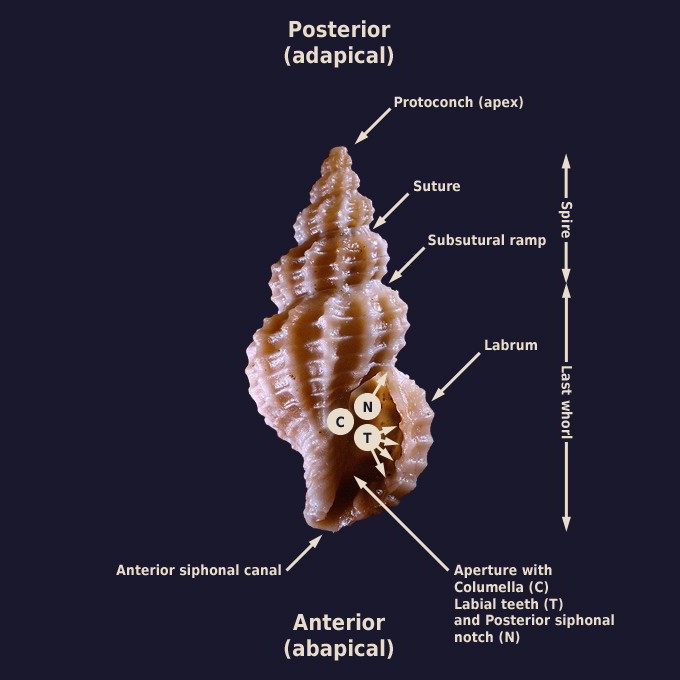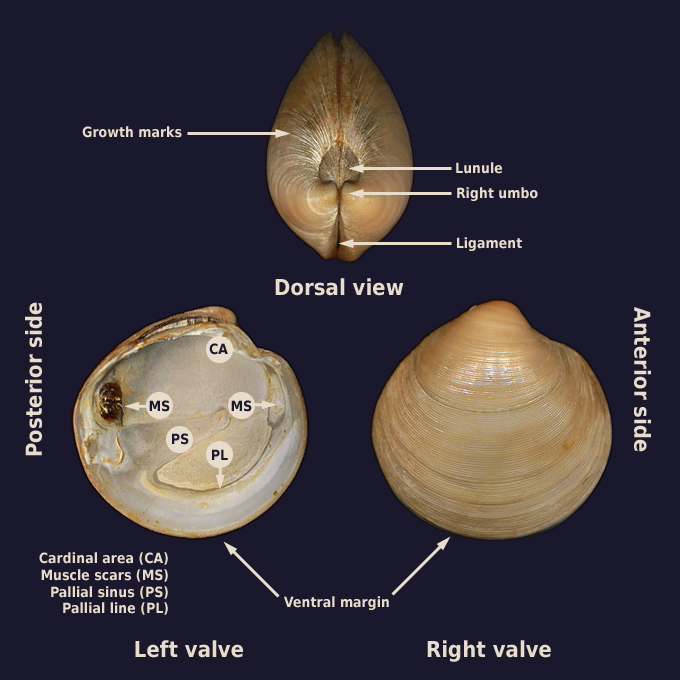GLOSSARY |
| |
|
| |
DEPTH TERMS |
|
SUPRALITTORAL:
Splash zone and above.
INTERTIDAL:
The foreshore.
SUBTIDAL:
Below the extreme low tide mark.
INFRALITTORAL:
From the subtidal level down to the limit between the photophile (request or tolerate hight to moderate lightening) and the sciaphile (request or tolerate moderate to low lightening) algal settlements. Depending of the turbidity of the water, the limit can raise to 15-20m (English Channel, Bay of Fundy) or lower to circa 60-80m deep (Caribbean, Red Sea). In Mediterranean, the limit is established around 30-40m.
CIRCALITTORAL:
Or sublittoral. This is the level in which the sciaphile algae can live. The upper limit is in the twilight zone. The lower limit corresponds to the end of the photic zone. Below this level, the benthic chlorophyllous vegetation will not survive; one enters here in the aphytal system. The continental shelf is in the lower part of the circalittoral level.
BATHYAL:
Continental slope and foot.
ABYSSAL:
The oceanic floor.
HADAL:
The deep sea trenches.
LYSOCLINE:
The depth-limit below which, because of the water pressure, the rate of dissolution of CaCO3 increases, prohibiting the survival of shelled organisms. Usually 4000-4500m, but only 3500m in the Bay of Biscay.
|
|
ECOLOGICAL TERMS |
|
BIOCENOSIS:
Introduced by Karl Möbius in 1877, this is the whole of the individuals living in a same area, under some laws generated by the latter, and connected by interspecific relations (predation, symbiosis etc). A biocenosis is described by its major medium of influence (infralittoral grass field, circalittoral coralligen, semi-obscure sciaphile cave etc). It is nowadays customary to follow the benthic bionomy popularized by Pérès & Picard in 1964. It may happen that a biocenosis produces a facies, as in Sedimentary Geology, where some environmental conditions generate the prevalence of a particular organism or crystal, which becomes characteristic of the level (marl with fishtail selenite, nummulitic limestone, etc).
PLEUSTONIC:
Living at the surface of the seas.
SYMPATRY:
Two species are sympatric when they live in the same geographical area.
SYNTOPY:
Two species are syntopic when they live in the same biotope.
|
|
MORPHOLOGICAL TERMS |
In Polyplacophora |
 |
|
APOPHYSES:The twin extensions located on both sides of the anterior part of the articulamentum. They are used as attachments to some body muscles.
ARTICULAMENTUM:
This is the anterior part of a valve, when it underlies the preceeding valve; it is usually whitish, without sculpture.
GIRDLE:
This is the fleshy mantle that surrounds the plates; its upper surface, the perinotum, bears various micro-elements (spines, hairs, scales etc.) among which occur some sensory organs.
INSERTION PLATES:
These extensions, devoid of sculpture, occur on the lateral margins of the intermediate valves, on the anterior margin of the head valve and on the posterior margin of the tail valve; they help to attach the valves to the surrounding girdle.
JUGAL PLATES:
When the apophyses are connected together, it is through a kind of lamina of the same matter: the jugal plate; usually, when jugal plates occur, the tegmentum shows a kind of keel, loke in Caetopleuriae.
JUGAL SINUS:
When the apophyses are not connected together, the hollow between them is named the jugal sinus. It can be large, narrow, denticulate or entire.
SUTURAL TUFTS:
These tufts of hairs or spicules occur at the boundary between the girdle and the tegmentum, mainly in front of the suture between two plates, but occasionally elsewhere in the extremities.
|
In Gastropoda |
 |
|
ABAPICAL:
In an element (growth line, aperture), this term designates the part furthest from the apex.
ADAPICAL:
In an element (growth line, aperture), this term designates the part nearest to the apex.
COLUMELLA:
In the aperture, this is the surface of the axial pillar around which the animal wraps; the columella can bear some folds or teeth, and can also be covered by a callus; the anterior siphonal canal is in continuation.
CYRTOCONOID:
Nearly conical but with a somewhat convex outline.
OPISTHOCLINE:
The abapical extremity of an element (lip, radial costa) is in advance (in the direction of growth) of its adapical extremity.
ORTHOCLINE:
Parallel to the general axis.
PLANKTOTROPHIC:
Characterizes a molluscs that feeds on plankton during its larval stage.
PROSOCLINE:
The adapical extremity of an element (lip, radial costa) is in advance (in the direction of growth) of its abapical extremity.
PROTANDROUS:
The animal begins by a male stage, before continuing its life as a female.
PROTOCONCH:
The very first shell of a Gastropod. A multispiral protoconch ordinarily suggests a long planktotrophic stage, and hence a strong capacity of remote scattering.
SELENIZONE:
In slitted gastropods, the selenizone is a band that runs posteriorly to the slit; this band shows incremental lines or threads that correspond to matter clumped by the animal in the posterior end of the slit, when this area becomes useless.
|
In Bivalvia |
 |
|
AMPHIDETIC:
In Bivalves, when a ligament extends on both sides of the beaks.
ANISOMYARIAN:
Bivalves with two adductor muscles of different sizes.
CHOMATA:
Marginal denticles in Oysters.
DIMYARIAN:
Bivalves with two adductor muscles.
DISSOCONCH:
The very first adult part of valve in a Bivalve.
ISOMYARIAN:
Bivalves with two adductor muscles of same sizes.
MONOMYARIAN:
Bivalves with one adductor muscle.
NEPIOCONCH:
The beginning of the dissoconch, when it is discernable.
OPISTODETIC:
In a Bivalve, when the ligament is posteriorly placed.
OPISTOGYRATE / OPISTOGYROUS:
In a Bivalve, when the beaks are pointing towards the posterior side.
PRODISSOCONCH:
The very first shell of a Bivalve.
PROSODETIC:
In a Bivalve, when the ligament is anteriorly placed.
PROSOGYRATE / PROSOGYROUS:
In a Bivalve, when the beaks are pointing towards the anterior side.
|
|


